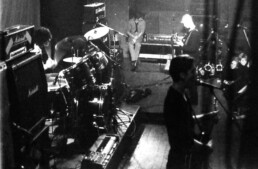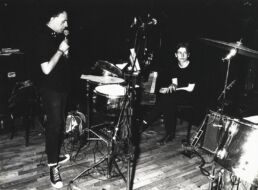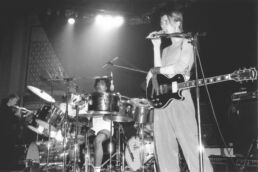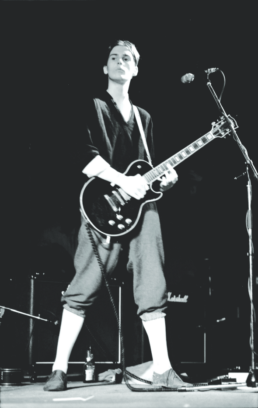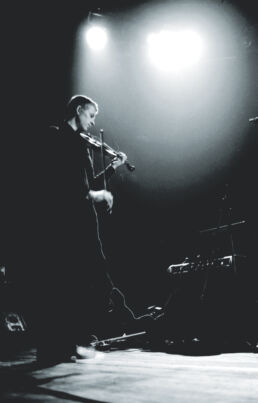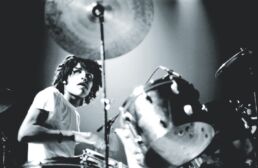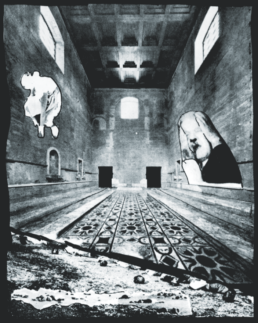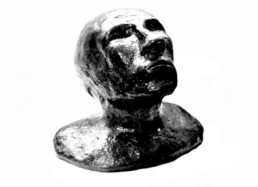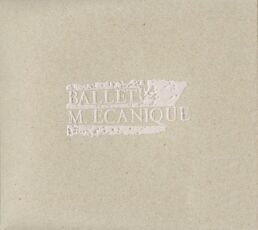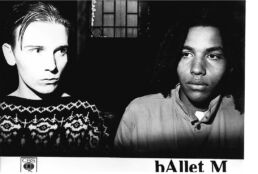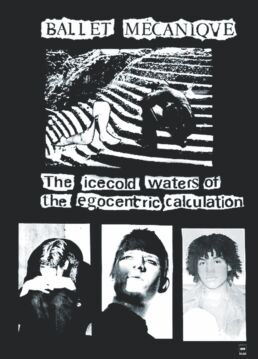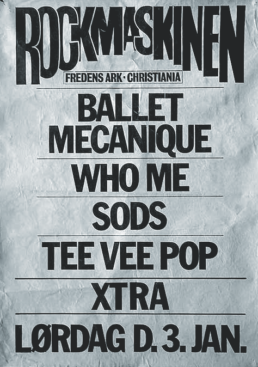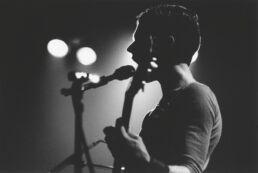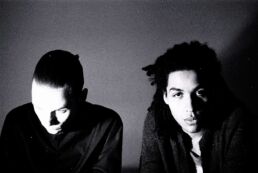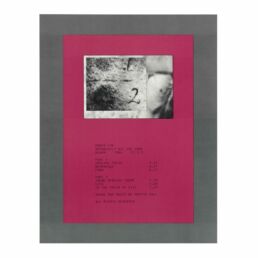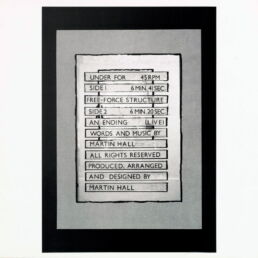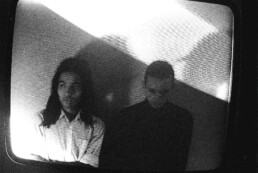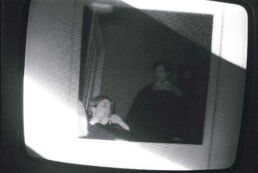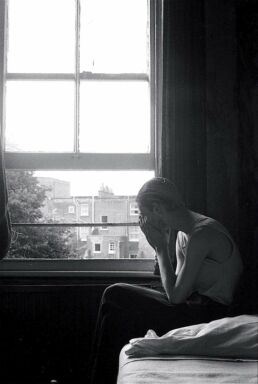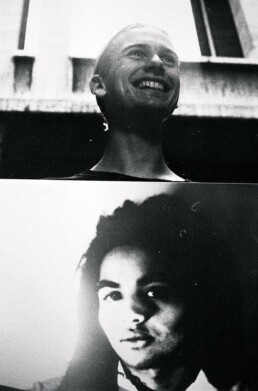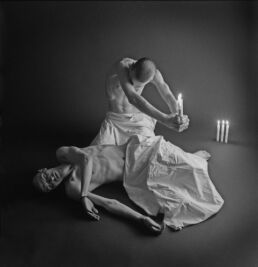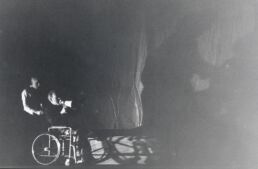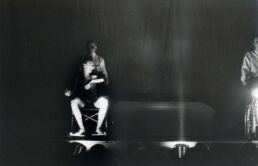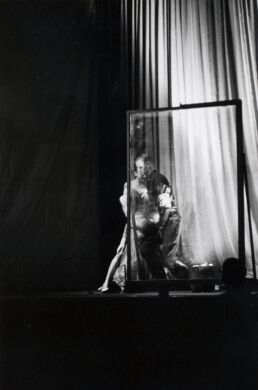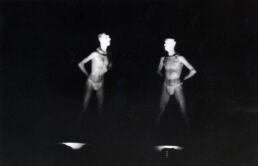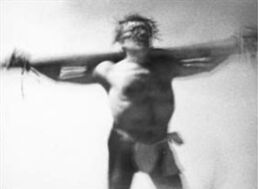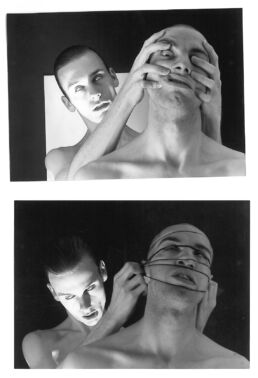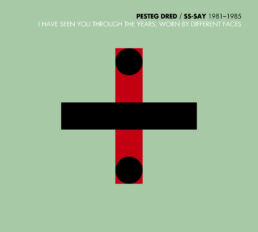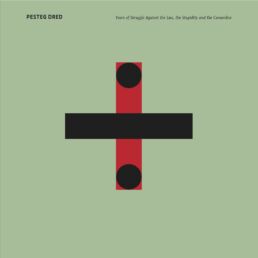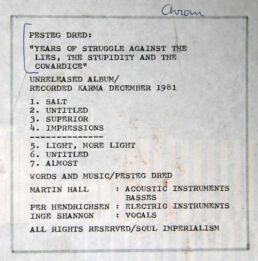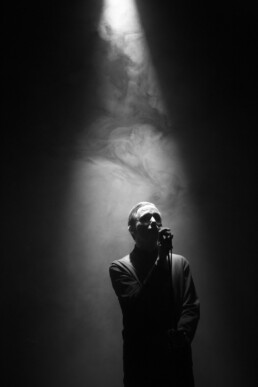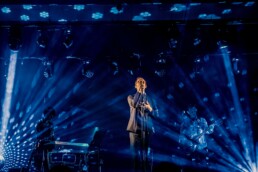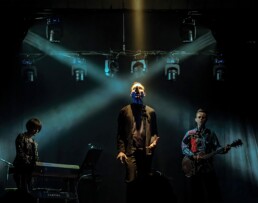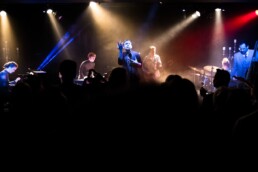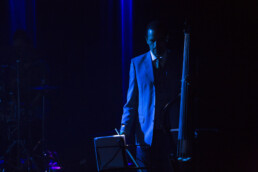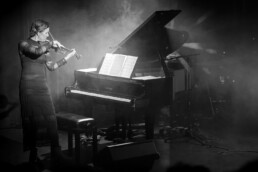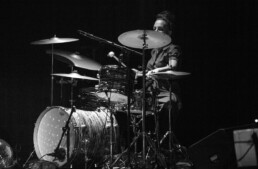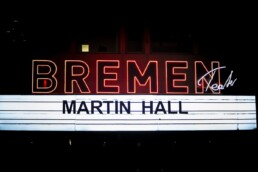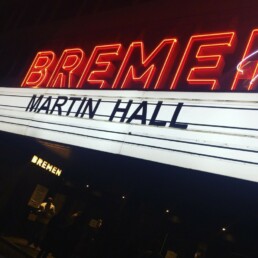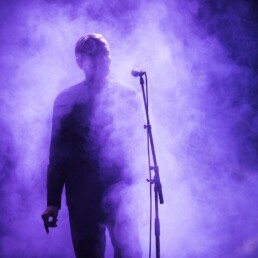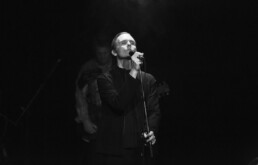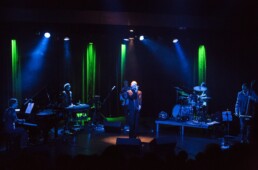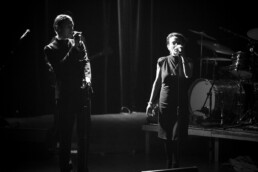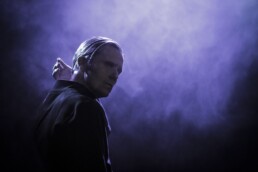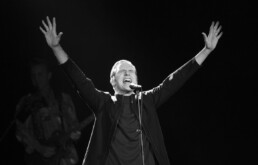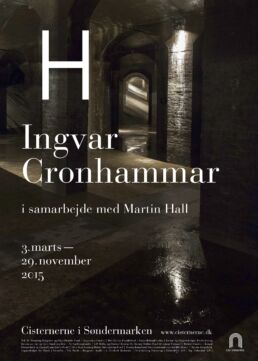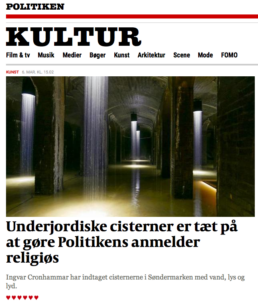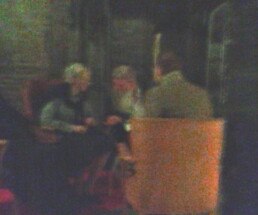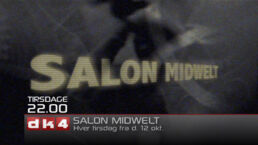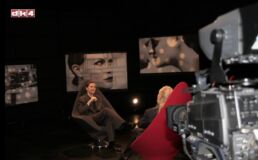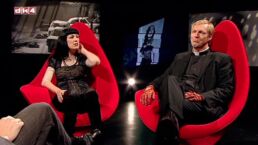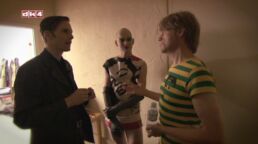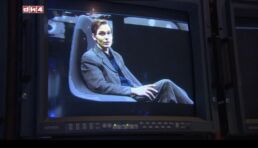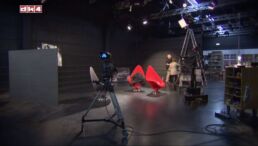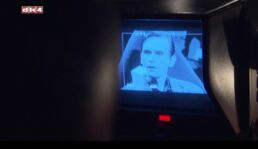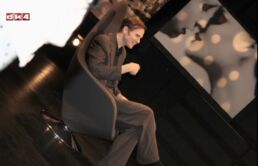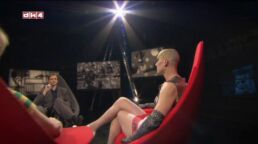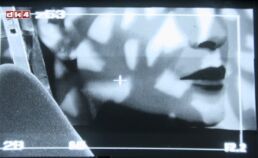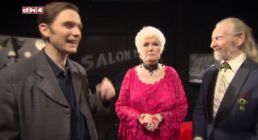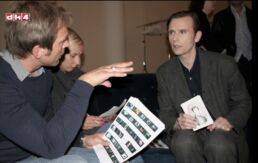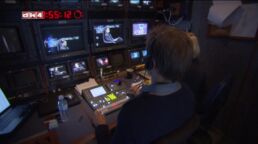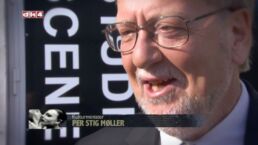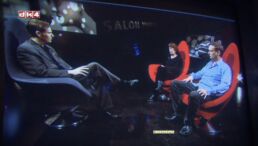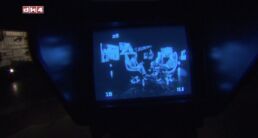INKUBATION
“INKUBATION” – NEW SPOKEN WORD BOX SET
Inkubation is a new spoken word collaboration between Martin Hall and Thomas Li, a recording that merges poetry and electronic installation music. The title is released on September 10 as a box set featuring a book, a double-LP and a cd in a limited edition of 250 numbered copies. The book is also released as an e- and audiobook.
Inkubation consists of six new pieces of writing and represents a consecutive exploration of character mutation; the story is a combined personality study and love story. The music on the release is produced by Thomas Li whose main focus over the last few years has been his involvement with the new electronic music scene in Tokyo. By the same token Japanese musician Kazutaka Kuroki makes a guest visit on Inkubation.
Martin Hall and Thomas Li have earlier produced the two Hall albums Random Hold (1996) and Adapter (1999) together.
The box set is sold for 399 DKR (approximately 53 euro) and can be ordered here as long as copies are available:

Inkubation is released with support from Augustinus Fonden, Koda Kultur, MPO and Danish Arts Foundation.
”TYGER TYGER” FILM
”TYGER TYGER” FILM
SS-Say’s internationally acclaimed track ”Care” has been chosen as the theme song for the American director Kerry Mondragon’s new film Tyger Tyger featuring Dylan Sprouse and Sam Quartin. The release date for the movie is February 26, 2021.
During the recording of ”Care” the members of the indie band SS-Say were Inge Shannon, Martin Hall and Henrik Möll. The group made its debut at Williams S. Burroughs’ visit to Copenhagen in October 1983.
You can see the trailer for the film and listen to the song by clicking on this link.

BALLET MÉCANIQUE
BALLET MÉCANIQUE
Ballet Mécanique released their first single Avenues of Oblivion in May 1980. The group’s debut album The Icecold Waters of the Egocentric Calculation came out in September 1981 and the group’s second and final album For was released in October 1982 after which Martin Hall reconstituted the group as Under For.
Ballet Mécanique synthesized rock, avant-garde and poetry in an at the time unheard way, using dancers, slides and films at their concerts to create their own surrealistic ecology on stage. Their impact on Danish contemporary culture was significant.
The Icecold Waters of the Egocentric Calculation was instantly proclaimed to be a work of historical proportions and the title still figures on lists such as the illustrious Danish rock encyclopedia Politiken’s Rockleksikon’s chart over the 50 most important releases in Danish rock.
Ballet Mécanique, Fortropper 24-25-26/4/1981
Photo: Torben Voigt
Ballet Mécanique, Odd Fellow Palæet 11/6/1981
Photo: Gorm Valentin
Martin Hall, Roskilde Festival 27/6/1981
Photo: Søren Svendsen
Morten Versner, Roskilde Festival 27/6/1981
Photo: Søren Svendsen
Michael Karshøj, Roskilde Festival 27/6/1981
Photo: Søren Svendsen
Album artwork 1981
Design: Martin Hall
Album artwork 1981
Sculpture: Morten Versner
Ballet Mécanique, Nosferatu Festival 7/3/1982
Photo: Ole Dreyer
The Icecold Waters of the Egocentric Calculation 2006
Design: Martin Hall
UNDER FOR
UNDER FOR
Under For was Martin Hall’s continuation of his Ballet Mécanique project after this group split up in 1982. Hall and drummer Michael Karshøj then joined forces with avant-garde guitarist Per Hendrichsen who Hall had been working in Pesteg Dred.
Under For only released one studio album, Apparently All the Same (1984), yet this title remains one of Hall’s most significant releases during the eighties. The group’s legendary concert at the classical festival ISCM World Music Days in October 1983 is included on the 2009 special edition of the album.
Apparently All the Same was one of the few Scandinavian releases from the period that was praised by British music magazines such as New Musical Express and Sounds. In October 1984 Under For also released the 12” single Free-Force Structure, a single that received a favourable review in NME as well. Furthermore Under For appeared in Claus Bohm’s film Totem from the same year.
A reproduction of the Danish indie magazine SAM NYT’s Under For feature 1984 is available here.
Apparently All the Same 1984
Design: Martin Hall
Free-Force Structure 12″ single 1984
Design: Martin Hal
Michael Karshøj and Martin Hall 1984
Photo: Henrik Möll
Lena Walsh and Per Hendrichsen 1983
Photo: Martin Hall
Martin Hall 1983
Photo: Lena Walsh
Martin Hall 1983 and Michael Karshøj 1984
Photos: Jacob Thuesen/Henrik Möll
PARADE
PARADE
Parade was a multimedia performance, an experimental theatre project performed by The Body Art Ensemble of Copenhagen, Martin Hall’s continuation of his 1982 outfit The Art Ensemble of Copenhagen. Hall’s partner in The Body Art Ensemble of Copenhagen was Henrik Möll.
Parade was written and directed Hall and performed over two nights at Saltlageret (a legendary venue in Copenhagen) in December 1984. At these shows Hall and Möll engaged in quite severe self-mutilation on stage (such as cutting themselves open) while films were projected with the two leading actors performing oral sex on each other. As far as Hall and Möll were concerned recitations were made solely via pre-recorded messages (mono- and dialogues) played from handheld walkman equipment on stage – all other narrative activity was made as either playback speak or performed live by the other actors via megaphones.
The show’s cast featured Jan Munkvad, Asger Gottlieb, Janine Neble and Jens Kruse. Last but not least, Martin Hall’s father, Eigil Hall, also appeared on stage, playing both the invalid ringmaster and — in the last scene – a naked Jesus the Christ. Eigil Hall had taken over the role from Elsebeth Hall, Martin Hall’s mother, who had committed suicide a few months before the show. Among other features she was to perform the role of a female Christ figure in the play’s last scene.
Whereas The Art Ensemble of Copenhagen’s 1982 performance Giv Folket Brød, Vi Spiser Kage (“Give the people bread, we’ll have cake”) was characterized by large quantities of (black) humour, Parade was distinguished by a complete lack of this element.
Photos: Kurt Rodahl
DARK ENTRIES INTERVIEW
DARK ENTRIES INTERVIEW
Interview with Martin Hall about the American Pesteg Dred release, October 2010, made by Josh Cheon
The Pesteg Dred album Years of Struggle Against The Lies, The Stupidity and The Cowardice was originally recorded in 1981, but first released as a cassette tape in 1985 in connection with the first issue of the Danish art magazine Atlas. In 2010 the American coldwave record label Dark Entries released the record as a vinyl lp, a reissue that received a lot of appraisal from international sites and music medias such as the English music magazine The Wire.
The following interview was made in connection with this re-release.
Can you tell us a little bit about growing up in Denmark and your earliest musical memories?
– I moved around a lot. Changed school five times before 4th grade, lived in Spain with my family for a year. Aged 10 I finally settled at Frederiksberg, Copenhagen, with my mother after her divorce. By then I’d fallen completely in love with the whole glam rock thing. My first Bowie record was a cassette version of Hunky Dory. When Diamond Dogs hit the stores, I bought it during the first week of its release. Then came Sex Pistols and my life was changed forever. However, I remember listening quite a lot to Stravinsky’s Sacre du Printemps at this time as well, thinking that this was the music of a genius. Soon after that it was all Philip Glass’ Einstein on the Beach, Pere Ubu, Half Japanese and an abundance of new English music. I’m a devoted Anglophile, God bless!
How did you form the band and choose the name, Pesteg Dred?
– Well, at the time I was writing these twisted tales, long stories with a certain surreal touch. I was very inspired by writings such as Comte de Lautréamont’s Les Chants de Maldoror and Boris Vian’s books. I was in my mid-teens, my formative years. Everything needed to be reinvented, redefined, so I’d started writing. My first (unreleased) novel was called Wound landscapes and the second something even more ghastly. Pesteg Dred was, as far as I remember, a character in one of these books. Or a place. Or some entity. I actually can’t remember. The Danish word “pest” means “plague” and “eg” means “oak” which should give you a fair sense of the imagery associated with the name. The band as such was a project, a possibility myself and co-founder Per Hendrichsen had spoken about for a while. We’d been working together as an electronic unit in two different bands called Dialogue and Uté-Va. The idea with Pesteg Dred was to make music that was less electronic – the key concept being that I was going to play all the acoustic instruments and that he was going to handle the electric stuff. It didn’t really work out that way, but that was the basic concept.
How did you come up with the album title ‘Years of Struggle Against The Lies, The Stupidity and The Cowardice’?
– It was a rejected original title for a completely paranoid and misanthropic autobiography I once came across. I liked the ring of this title – the sense of utter claustrophobia and paranoia. I remember thinking that the British group New Order must had heard about the Pesteg Dred album when they released their Power, Corruption and Lies a few years later. Just joking. But both titles signify a certain zeitgeist, the “malade” of the era so to speak. The beginning of the 80’s was characterized by a radical seriousness, a Sturm und Drang attitude towards all and everything. Peel off the theatrical manners in a title like Years Of Struggle Against The Lies, The Stupidity And The Cowardice and you’re left with a guerrilla-flavoured state of paranoid defiance. Yes, the title is completely over the top, but at the same time we meant every syllable of it. The early 80’s were a very black-and-white period.
Do you remember the set-up and equipment for recording the songs from this LP?
– It was a sonic raid. My band at the time was Ballet Mécanique, we had just released our debut album, The Icecold Waters of the Egocentric Calculation, but as I’ve already said, I’d been working with Per Hendrichsen in various electronic constellations. Whereas Ballet Mécanique featured instruments such as violin and cellos, Per was entirely into electronic gear. I always wondered how he got all the stuff, the Roland synhesizers and the echo boxes, ‘cause no one had ever any money at that time, least of all him. Anyway, suddenly one day Per had booked this little studio called Karma Studio for a weekend, so off we all went. I was quite surprised, since I had no idea of how he intended to finance the project. I prepared a lot of musical sketches and lyrics for the session, but once we got there it was pretty much all “shooting from the hip” – from the time of our arrival on a Friday afternoon to the final mix Sunday night. There was so little time, so most of the material on the record is first-takes. I’ve had some classical training as a guitarist, but the great thing about Per was that he actually couldn’t play an instrument – at all! What he did instead was to plug a guitar into all these wonderful electronic devices and modular systems, so whatever he played via this equipment didn’t really matter, ‘cause in the end everything was turned into this incredibly weird sounding noise. He was really good at that. However, the week after we’d been in the studio, he was due to pay the bill for the recording sessions, which he obviously couldn’t, so then the master tapes were confiscated. It was all very depressing. It took a lot of negotiation on my behalf to gain control of the material.
In 1981 you recorded two solo tapes, Ballet Mécanique’s debut album, this Pesteg Dred album, and you were only 18 years old. How did you do it?
– It’s like being in love: You don’t sit around waiting for a cue, you react to the circumstances! I loved music and I hated the claustrophobic feeling of living in Copenhagen, so spending time in various artistic environments was my way out of the misery. Already by then people were killing themselves – I mean, in the years to come my acquaintances would be reduced by something like 50% – but at the same time there was this incredible sense of possibility in everything. The punk legacy was a DIY-culture and that was how everything got achieved – you just went out and did things. It was an attitude towards life: You don’t stand a chance, so make use of it. I remember hearing this phrase and thinking, yes, that’s right, head on! Having your back against the wall both financially and existentially strengthens your determination, at least that’s how I reacted. “Perfect paranoia is perfect awareness” etc. Society as such seemed quite hostile to me at the given time, and yes, amphetamine made a lot of people paranoid, but at least it made them react. I was always straight when I was playing or recording music, the process of making it was more than enough in itself, but still it was “deconstruction time” all over the line: You had to break structures down to attain something new. Taking risks was part of the journey. The most important energy wasn’t dependent on stimulants, it came from the artistic processes. Art is a perpetual motion device, always has been, always will be.
What were the inspirations for your lyrics at this period? Why did you choose to sing in English rather than Danish?
– As I’ve already stated, I’m an Anglophile. There were about 200 people involved in the scene at the time, at max, so obviously the inspiration was coming from everywhere else but Denmark. I loved English ensembles like Throbbing Gristle, Cabaret Voltaire and A Certain Ratio and the whole Disques du Crépuscule thing going on in the Benelux countries. This was the kind of environment you wanted to connect to and communicate with, not some patronizing old guy ruling a local newspaper in Copenhagen. We wanted to communicate with like-minded individuals. I remember receiving a written letter from Larry Cassidy, the singer and bass-player in Section 25, in response to a line of questions I’d sent him after hearing the group’s first single “Girls Don’t Count” in 1980. He’d even sent me a cassette tape with the demos for their upcoming album Always Now. I was so thrilled. The world felt so close at hand!
The Pesteg Dred LP was recorded in 1981, but remained unreleased until 1985 when it was issued as a bonus cassette along with the magazine Atlas. Why the long stretch of time and limited tape format?
– As I said, we had some problems with getting the master tape released from the studio due to the missing payments. Inge (Shannon, the singer in Pesteg Dred) suffered a nervous breakdown shortly after recording the album and we were all going through some difficult times. In October 1983 my next band, SS-Say, made its debut at the legendary William S. Burroughs visit in Copenhagen. We used another singer at the time, Inge being quite retreated in that period, but at some point the people arranging the Burroughs-visit began talking about including the Pesteg Dred album with a new art magazine they were planning to make. It seemed like a perfectly good idea. Before they came around to do so, Inge had joined SS-Say and things were on the move again. Everything came together in 1985: SS-Say released ‘Fusion’ and Atlas, the art magazine, made the Pesteg Dred material available as a cassette. One of the people behind Atlas was Danish painter and musician Christian Skeel, so obviously it had be his artwork on the cover of the Pesteg Dred re-release. There’s a certain sense of symmetry in it all – both in the design processes as in the inter-development of the two bands.
I first heard the song “Care” by SS-Say in a goth club in New York City and to me the vocals captured such intense emotion. I found the song trapped in my head for weeks. The vocalist, Inge Shannon, she displays her vocal range quite proficiently. How did you meet her?
– Inge was one of the first punks in Denmark. It was even her graffiti shown on the back cover of the first real Danish punk-lp, the Minutes To Go album with The Sods. She sprayed the band’s name and logo on a train station somewhere in the suburbs to Copenhagen and the group used this motive as the back cover illustration on the lp-release. Per Hendrichsen and Inge had known each other for some time by then. I met her when I began going to punk concerts in 1978. She’s a very gentle individual, a very pleasant person to be with. To me it was quite obvious that she should be a singer in a band – she just had that kind of thing to her. I love Inge’s voice, but she never really considered herself a singer. She didn’t particularly like the sound of her own voice, she actually found it quite embarrassing. She had recorded a few tracks with Per Hendrichsen for a tape he’d once made, that was it as far as her singing was concerned, so the Pesteg Dred recordings represented a big step to her. Shortly after the sessions she had this breakdown I mentioned and was pretty much out of circulation for a few years, but when she joined SS-Say in 1984, she had become such a great singer.
For many people this will be their first time hearing Pesteg Dred. Do you have any listening instructions for them?
– No. Music shouldn’t be defined as such, it either has an impact on you or it doesn’t.
Did Pesteg Dred ever play live or tour? Can you describe your most memorable/favourite live gig with this band?
– We never played live with Inge. Later on me and Per made a version of the band with two bassists – one of the being the Danish painter Peter Bonde, a later professor at the Royal Danish Academy of Fine Arts actually ¬– but it was all instrumental, basically me banging away on the drums and Per making all this god-awful noise with his guitar amplifiers and modulations.
How do you feel about the renewed interest in your earlier music?
– It seems like a logical consequence in many ways. Not that I consider it particularly divine or anything, it just has its own sense of a natural vigour. And then it seems to be a kind of unwritten law, that if something is enough out of sync with everything else at the time of its conception, it’s probably going to stand the test of time.
What music are you currently listening to these days?
– Quiet stuff. I like Goldmund’s records – his music seems to capture the essence of my current needs. Recently deceased French composer Hector Zazou’s ‘In the House of Mirrors’ has been another one of my favourite records lately.
I know you remain active in the worlds of art, music and writing. What are your current musical projects and plans for the future?
– I’ve just released a new novel, a book called Kinoplex, and the whole prospect of writing is getting more and more serious to me. I’ve also written a line of new music with Christian Skeel for the audiobook version and I’m going to perform Kinoplex as a stage play as well – with a narrator and a small ensemble – during October and November this year. So there’s a lot of activities going on as far as this material is concerned. Furthermore I’ve been playing with internationally renowned classical accordionist Bjarke Mogensen and string-bassist Ida Bach Jensen in relation to a series of spoken word-concerts recently. I basically find myself involved in a lot of stimulating projects at the moment. Last week my St. Paul’s live-performance was released on DVD and a few hours ago I delivered a contribution to the next Second Language soundtrack. I’m also planning to record a new album during 2011, but as with all things, you can only plan so much ahead – the rest seems to happen to you all by itself.
BREMEN TEATER
BREMEN TEATER
When Martin Hall played at Bremen Teater in October 2018, it happened after a five-year live break. Accompanying him on stage he had a 6-piece band consisting of both electric and classical musicians, and the material ranged from brand new tracks to several surprises from the back catalogue.
In particular his updated version of “Free-Force Structure” amazed a fair amount of the older fans, since Hall hadn’t played the song live since 1985. Other songs that evening included “Muted Cries”, “Poem”, “Dead Horses on a Beach”, “Another Heart Laid Bare” and “Images in Water”.
Another big surprise was when former SS-Say singer Inge Shannon walked on stage to sing the group’s internationally renowned coldwave classic “Care” with Hall.
The musicians accompanying Hall at the concerts were:
Christine Raft (piano and violin)
Johnny Stage (guitar and sitar)
Una Skott (guitar and keyboards)
Andreas Bennetzen (double bass)
Sisse Selina Larsen (drums and percussion)
The concert received a line of outstanding reviews and in particular Simon Heggum’s GAFFA review (the biggest Danish music magazine) seemed to put into words what kind of experience many of the attending guests had had that night. In his feature he didn’t only award the evening with a 6 out of 6 stars review, but began by writing the following:
“Talking about a country being too small for an artist may sound like a bit of an exaggeration. But in the case of Martin Hall, it is nevertheless true.”
At the end of the line his summation of the night goes like this:
”A breathtaking concert experience – one of the strongest Danish concerts I’ve been to in recent years.”
You can read the whole review here.
All live photos in the right column: Maiken Kildegaard
The following pictures are taken at some of the other concerts during October 2018, prior to the Bremen event. The photographers here are Bjarne Christensen and David Faurskov Jensen.
”H” AT THE CISTERNS
”H” AT THE CISTERNS
Ingvar Cronhammar exhibition with music made by Martin Hall at The Cisterns. Open from the 3rd of March until the 29th of November 2015.
33 years after The Cisterns were drained, the water returned to the 4.320 square metre wide water reservoir below Søndermarken (a large park in Copenhagen, Denmark). In March 2015 “H” opened its doors to the public, an ambitious installation by Ingvar Cronhammar created in accordance to the site-specific challenges and climate of the place. The music for the project was made by Martin Hall.
The exhibition was awarded with a line of sublime reviews. Highlights go like this:
Politiken (the Danish equivalent to The Guardian): “Overwhelming … the perfect combination of something industrial and something sacred.” (rating: 6 out of 6)
Berlingske (the Danish equivalent to The Times): “A unique installation in Frederiksberg’s underworld.” (rating: 6 out of 6)
Information (the Danish equivalent to The Independent): “An underground cathedral of light and water … an extremely successful installation.” (no rating system)
Weekendavisen (the Danish equivalent to The Observer): ”Eminent.”
Fyens Stiftstidende (major sectional newspaper): “Extraterrestrial magic!” (rating: 6 out of 6)
Furthermore the art magazine Kunsten Nu wrote the following: “Sensual perception beyond the ordinary … the new work re-enchants The Cisterns.”
The exhibition was visited by more than 90.000 guests during 2015.
As a visitor you are surrounded by water – both in form of a large water surface covering the floor and columns of luminous, falling water as well as water dust appearing like haze in the rooms.
In the Danish newspaper Politiken Torben Sangild wrote the following in his 6 out of 6 rated review:
“There is no doubt. It is grace itself that flows down into the dark, damp underground space under Søndermarken. Grace portrayed in a double grip, with columns of light and water revealing itself from the top down, so even a sworn atheist as me feels the impulse to kneel and say “thank you!”
Concerning the music’s importance for the work Sangild further wrote:
“The spaces are filled not only with light and water, but also sound. Martin Hall has created a musical track that alternates between a chanting boy singing a simple scale and more experimental ambient sounds. The sound is played in the anteroom and the complex acoustics of the vaulted architecture contributes with two things: First and foremost, the reverb is so violent that the music dissolves into and mixes with the water roar, so you don’t get a clear sense of the details. Secondly, the sound is thrown around in opaque ways, it spreads itself to then suddenly re-emerge, it’s remote, yet suddenly near. Both features emphasize a sense of the music being present in the room, part of the room; as if it is the space itself that sings its resounding prayer.”
In the Danish newspaper Information Rune Gade concludes his review A Shimmering Cathedral of Water with following words:
“H is a highly successful grapple with an impossible architectural framework where Cronhammar’s effort really shows its potential. This is highly developed sense of sculpturing that gives expression to the intangible and fleeting forms of light and water. An installation that — with the assistance of sound – transforms The Cisterns into an underground, submerged cathedral, a peristyle of white luminance, a gushing magnitude of light. Without any didactic instructions regarding what to do with it all. You are left on your own in this impressive and imposing staging of the architecture of the godless.”
On the musical part Martin Hall collaborated with participants such as Daniel Ostersen (a young boy’s voice singing the main theme), the classical ensemble Lydenskab and Maiken Kildegaard.
Martin Hall and Ingvar Cronhammar have worked together several times before, first in relation to Elia in 2001 and later on with Racing Cars at ARoS in 2006.
At the end of 2014 The New York Times recommended The Cisterns as one of only twelve sights you have to see, if you visit Copenhagen. In the spring of 2015 Her Majesty Queen Margrethe II of Denmark visited the place to see the exhibition.
Ingvar Cronhammar: Born December 17, 1947, and educated at the Aarhus Art Academy 1968-1971. Head of the School at Funen Art Academy from 1990-1995. Served as a member of the Danish Arts Foundation Committee for Art in the Public Space in 2002-2004. Cronhammar received Eckersberg Medal and Thorvaldsen Medal and in 2007 was appointed to the Order of Dannebrog. His art is represented in most Danish art museums and in public spaces. In 1995 he was awarded the National Arts Foundation grant for life.
SALON MIDWELT
SALON MIDWELT
During October and November 2010 Martin Hall hosted his highbrow talkshow Salon Midwelt on the Danish tv-channel DK4.
The show appeared once a week and featured two new, separate guests at each occasion. Furthermore all shows presented a new video either made by either Territorium or fashion photographer and design analyst Erik Hansen-Hansen.
Among the guests on the show were the Danish Minister of Cultural Affairs Per Stig Møller, the authors Kirsten Thorup and Thomas Boberg, queer performers Miss Fish and Sandra Day as well as DJ Djuna Barnes and all-time celebrity icon Marquis Marcel de Sade – a herostratically famous Danish pianist and flaneur who by his spectacular and flamboyant lifestyle turned Denmark upside down in the 50’s and start-60’s.
You can also see the trailer for the show here:
LIST OF PROGRAMMES
The 12th of October: ”First person singular of autonomy” – a programme about punk and queer culture. Guests: Jan Poulsen (author) + Miss Fish (performer, leader of Warehouse 9).
The 19th of October: ”Seduction and puritanism” – a programme about lust, fashion and luxury fetishism. Guests: Erik Hansen-Hansen (fashion researcher, photographer) + Sabina Elvstam-Johns (sexologist, owner of the shop Lust).
The 26th of October: ”The lost hipster” – a programme about the development of hipster culture throughout the 80’s, 90’s and 00’s. Guests: Martin Kongstad (writer, flaneur) + DJ Djuna Barnes (dj, writer).
The 2nd of November: ”The fiction of the body” – a programme about roleplaying and the body as an aesthetic object . Guests: Marcel de Sade (pianist, celebrity) + Sandra Day (actor).
The 9th of November: ”The political poetry” – a programme about the borderland between poetry and politics. Guests: Kirsten Thorup (author) + Thomas Boberg (poet).
The 16th of November: ”The lost pathos” – a programme about culture, edification and the soul of our age. Guests: Per Stig Møller (Danish Minister of Cultural Affairs) + Søren E. Jensen (author, priest).
The 23rd of November: ”Behind Salon Midwelt” – a documentary about the making of Martin Hall’s Salon Midwelt.
LATEST RECORDS AND REVIEWS
In May 2018 Martin Hall released the compilation album A Brief Summary, a title that includes several new recordings – such as the video single ”Lesser Gods”. The album also contains remakes and alternative versions of material recorded during the last twenty years. It’s released as a double vinyl album, a digipack cd and as music cassette. Quite surprisingly A Brief Summary went directly in as #2 on the official Danish vinyl hitlist the week after its release – Hall’s highest chart ranking ever.
In the Danish newspaper Information (the Danish equivalent to The Independent), the reviewer Sophia Handler praised the album in no uncertain terms:
“Once again Martin Hall proves that he belongs in the same category as music mythological heroes such as Brian Eno and David Bowie”.
If you have any sense of the Danish language, you can read the full review here:
“SERVICES RENDERED” AND BREMEN TEATER
As a prelude to his first live concerts for more than five years Hall released the new song Services Rendered as a 12” single in October. The record was also made available on all major digital platforms (Spotify, iTunes, Amazon etc.).
GAFFA – Denmark’s biggest music magazine – awarded the following Copenhagen concert at Bremen Teater, with a staggering 6 out of 6 stars rating. The music journalist Simon Heggum summons up the concert this way:
”A breathtaking concert experience – one of the strongest Danish concerts I’ve been to in recent years.”
You can read the full review here:

